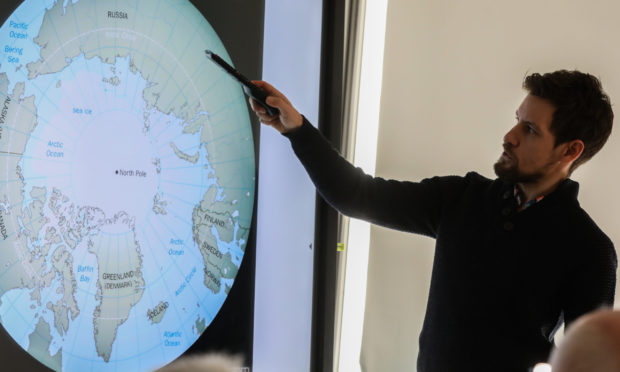Scotland’s east coast was once battered by a tsunami including waves of up to six metres high, researchers have shown.
Dundee University’s Professor Sue Dawson and Dr Simon Cook have won a national award for their work on “extreme geographical events” on local shores.
Professor Dawson was recorded taking soil samples from local coastlines, including the Montrose basin and Tentsmuir Forest, to show a huge wave had struck Scotland around 8,000 years ago.
A collapsing seabed close to what is now Norway sent the Storegga Tsunami racing across the North Atlantic Ocean, before the “huge, high energy waves” struck Scotland.
She said: “In Shetland, these waves reached a height of at least 20 metres. Here on Scotland’s East Coast, the waves were between four and six metres high.”
The geoscientists from the university’s Geography and Environmental Science department won the Geographical Association’s Silver Publishers Award for their work to highlight the ancient waves.
The ‘Time for Geography’ educational videos include animations, physical models, real-life footage, and on-location shots to reveal the causes of the tsunamis and what geoscientists can learn from past events.
Members of the Association hailed the videos for bringing to life the “often neglected” subject.
The award was presented at its annual conference, which was hosted online.
Sue said: “These videos represent the fantastic collaboration of everyone involved and a wonderful testament to the success of our partnership with Time for Geography in supporting secondary education as well as showcasing the excellent coastal landscapes on our doorstep.”
Sue is a world-renowned hazard geoscientist and an expert on tsunamis. She has helped to reveal the impact that historic tsunamis have had in shaping the British Isles, work highlighted in the award-winning films.
She said a similar event could happen again today.
“As recently as 1755, Cornwall was hit by a three metre high tsunami. But these are rare events, and they don’t happen very often.
“It is unlikely that another large event like the Storegga Tsunami would happen today,” she added.
Simon’s research work focuses on hazards and risks associated with deglaciation, glacial erosion and sediment transfer, as well as improving the public communication of geohazard and risk science.





